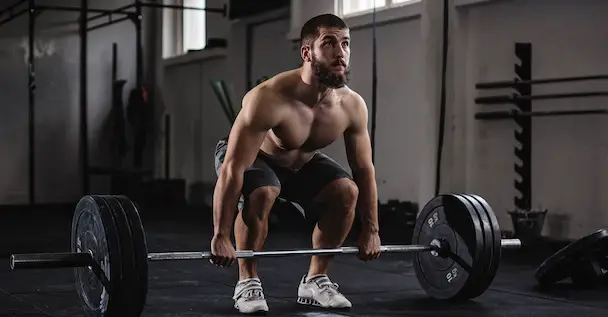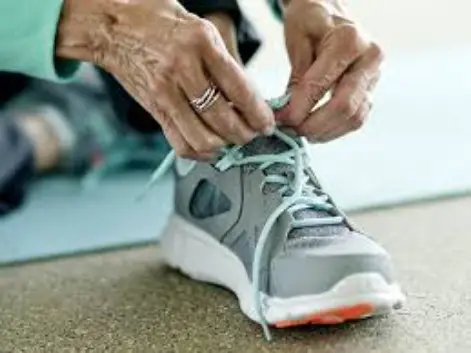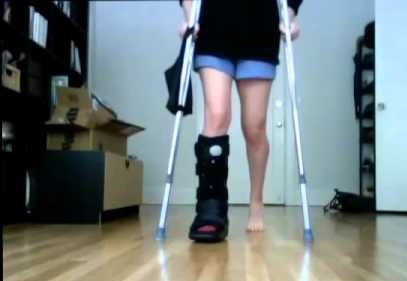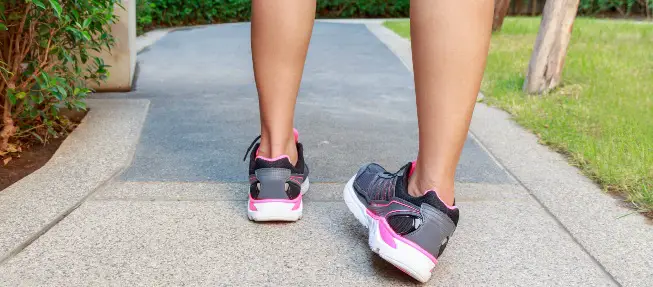Like many people out there, I know you, too, must have the same question, “Can I deadlift using squat shoes?” lingering in your mind.
The short answer is no; you should not.
Since squat shoes have high heels of around 1 inch extra compared to the normal flat deadlift shoes, this can prove to be hazardous.

You may wonder, will this additional inch make a huge impact on your deadlifting workout?
Yes! While lifting, you need to lift the barbell higher than you would normally to make up for the right posture due to high heels.
This will also cause stress on knee extensors.
Don’t deadlift in squat shoes can be a generalized saying, but actually, they are referring to the fact of the high-heeled squat shoes, also called Olympic weightlifting shoes.
5 Reasons Not to Deadlift in Your Squat Shoes
Wearing heeled shoes can be apt when you squat as they can offer you good mobility and support for your hips.
It helps to ensure that you have a good balance and posture by avoiding any injury. But this is not the case for deadlifting.
Now it’s time to dwell on the core topic where you would get the pinpoint answers you are looking for.
Let’s see why you should not deadlift in your squat shoes?
Just don’t be in a hurry and take your time to read the whole article to get a complete grip, not only on your hands and foot but also on your mind about this topic.
1- Range of motion gets affected
If you wear heeled shoes, you have to lift the barbell to cover the extra gap of 1 to 1.5 inches.
It may seem like a paltry distance of around 1 inch. Still, when doing deadlifting or powerlifting, many people have lost the competition, unable to complete the full circle of motion.
So the fact is this small 1 inch can create a huge difference.
You would have come across people wearing shoes with flat soles while deadlifting for the above reason.
Even people do it barefooted, but when it is prohibited, they opt for flat shoes.
2- More stress on Quads
While doing deadlifting, different muscle groups are worked out in different stages.
When using the wrong shoe type, you may not work out the targeted muscle area as intended and may cause unnecessary stress.
Hold on, this may sound a little technical, but you can try to know it.
Actual posture movement when you lift with deadlift shoes gives less work to the quad areas and more to the glutes.
When the barbell reaches knee level high, the hips will come forward, and the shoulder goes backward. This is the right way of exercising the right muscle groups.
But when you do the same with heeled shoes, knees get pushed forward by giving more stress to your quads.
The main challenge arises in the mid-range posture and lock-out posture as you may struggle to move the hip forward towards the barbell due to elevated heels.
3- Lack of ankle support
There are many types of deadlifting like conventional deadlifting, sumo deadlifting, etc.
In sumo-deadlifting, a wider stance is maintained, which poses full pressure on the ankle’s outer side.
Squat shoes don’t offer the required ankle support. When lifting heavier weights, there are chances for the ankle to slip sideways, causing injuries to the lifter.
Proper ankle support gives peace of mind and confidence to lift more weights while maintaining proper posture.
4- Improper grip on the shoe
Squat shoes won’t offer “good grip” like deadlift shoes.
The friction available on the outer sole of the deadlift shoe is on another level compared to the squat shoes, where it is minimal.
In the case of sumo deadlifting, people often spread their legs wide apart than required to give proper support to the posture while lifting due to the lack of grip in the shoes.
This will harm the hip area and groin in the longer run.
You might have encountered instances of people crushing their toe fingers caused due to slippage of the barbell while placing it back on the floor.
By wearing deadlift shoes, you can avoid the above injuries.
5- Hard to keep centre of mass in one place
When you deadlift, it is important to have the body weight, and barbell weight pressure be placed on the mid-foot area.
When you wear a heeled shoe, this weight pressure will transfer forward to the toe fingers causing discomfort to balance.
So, it is ideal to do barefooted or wear a specially designed deadlift shoe with a flat sole that serves the right purpose.




